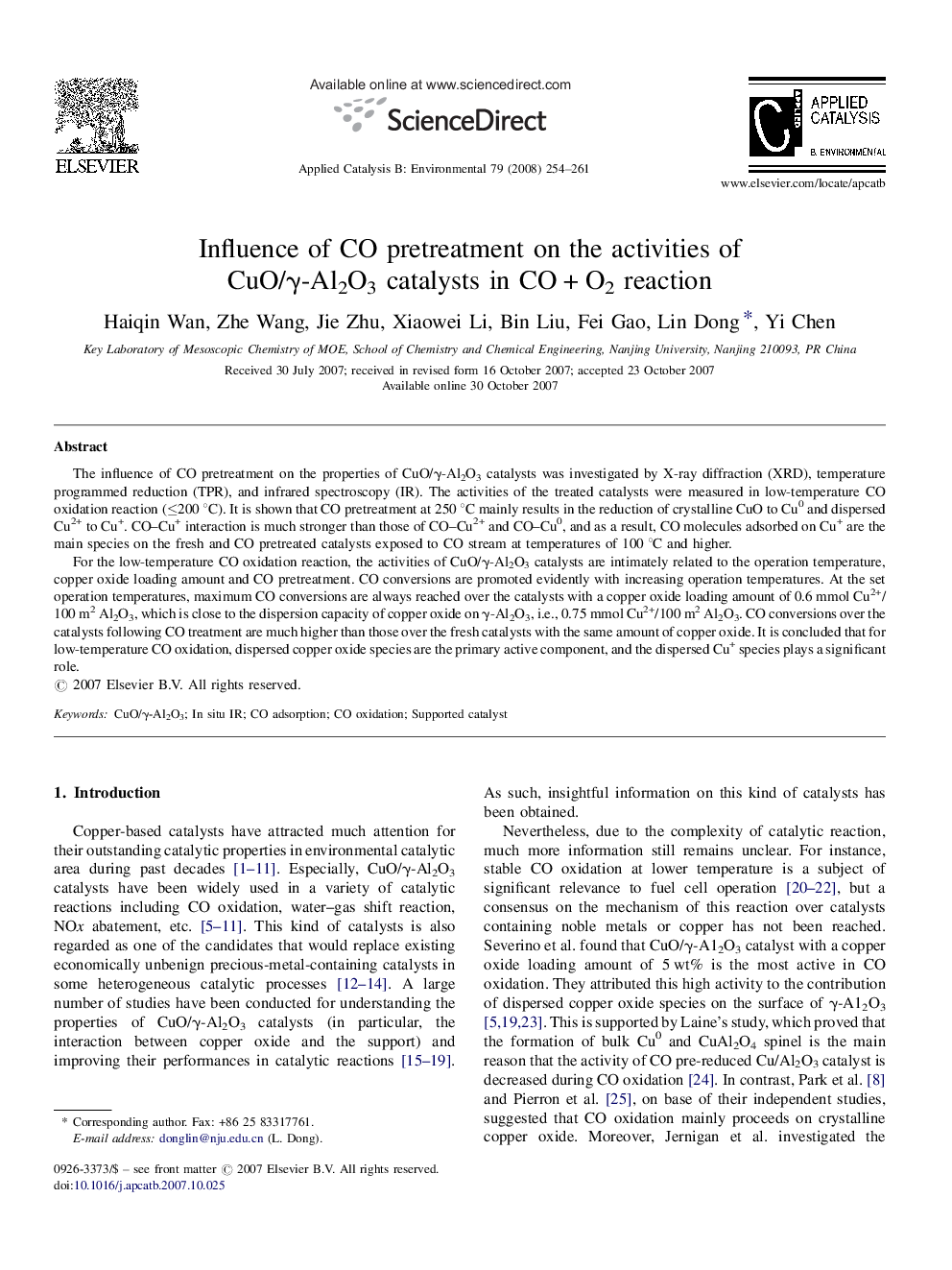| Article ID | Journal | Published Year | Pages | File Type |
|---|---|---|---|---|
| 48337 | Applied Catalysis B: Environmental | 2008 | 8 Pages |
The influence of CO pretreatment on the properties of CuO/γ-Al2O3 catalysts was investigated by X-ray diffraction (XRD), temperature programmed reduction (TPR), and infrared spectroscopy (IR). The activities of the treated catalysts were measured in low-temperature CO oxidation reaction (≤200 °C). It is shown that CO pretreatment at 250 °C mainly results in the reduction of crystalline CuO to Cu0 and dispersed Cu2+ to Cu+. CO–Cu+ interaction is much stronger than those of CO–Cu2+ and CO–Cu0, and as a result, CO molecules adsorbed on Cu+ are the main species on the fresh and CO pretreated catalysts exposed to CO stream at temperatures of 100 °C and higher.For the low-temperature CO oxidation reaction, the activities of CuO/γ-Al2O3 catalysts are intimately related to the operation temperature, copper oxide loading amount and CO pretreatment. CO conversions are promoted evidently with increasing operation temperatures. At the set operation temperatures, maximum CO conversions are always reached over the catalysts with a copper oxide loading amount of 0.6 mmol Cu2+/100 m2 Al2O3, which is close to the dispersion capacity of copper oxide on γ-Al2O3, i.e., 0.75 mmol Cu2+/100 m2 Al2O3. CO conversions over the catalysts following CO treatment are much higher than those over the fresh catalysts with the same amount of copper oxide. It is concluded that for low-temperature CO oxidation, dispersed copper oxide species are the primary active component, and the dispersed Cu+ species plays a significant role.
